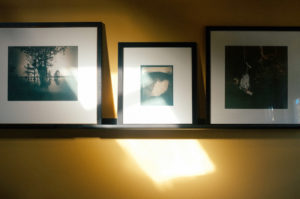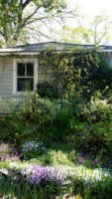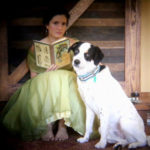The delightful image: an interview with photographer Diana Bloomfield
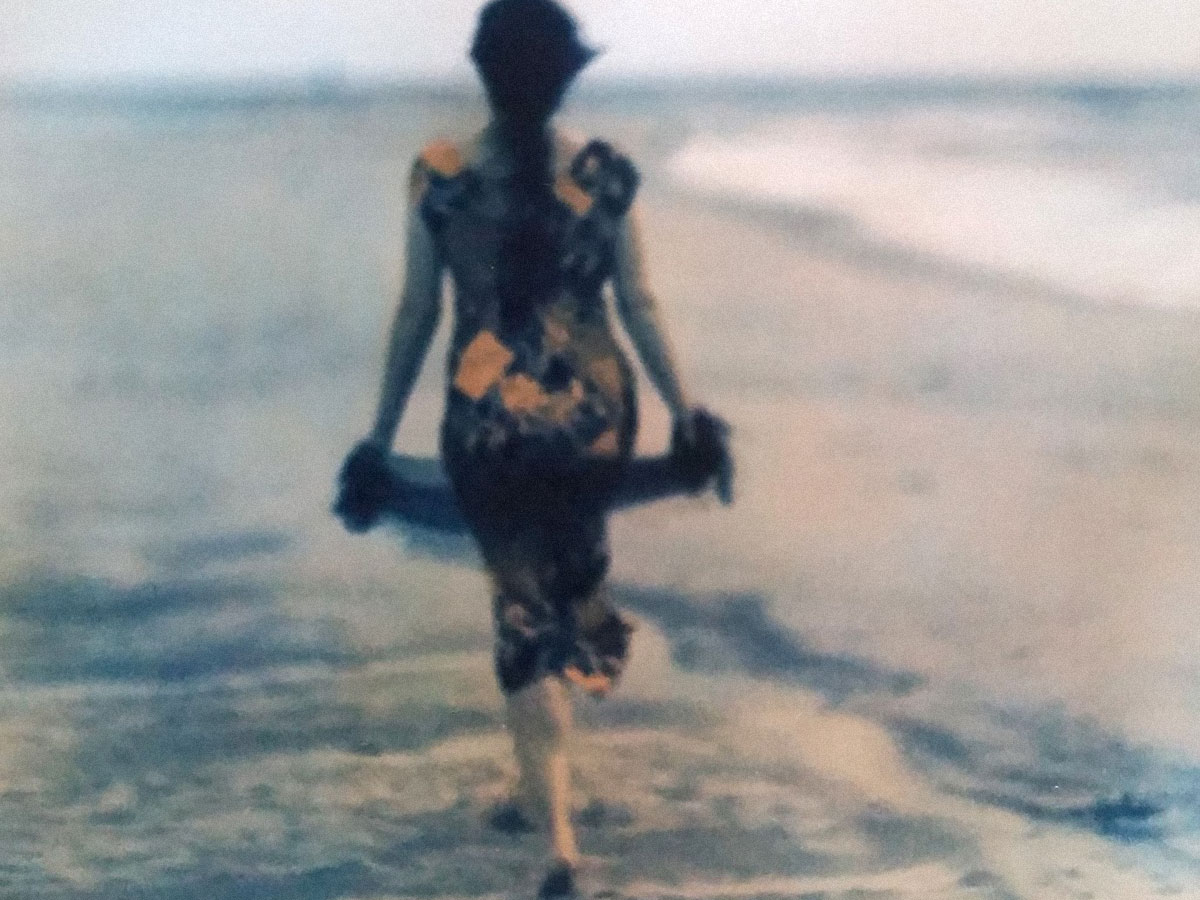
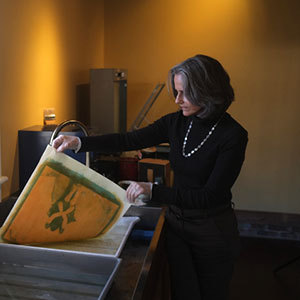 The water ran in an endless trickle. Slowly the layer of chemicals and pigment began change its visual surface. What was once solid blue now showed signs of something different emerging – the image of a lone flower. Other papers sharing the rinse-water tray sported a cat, an ocean and a microscopic flower.Photographer Diana Bloomfield peaked at her student’s work, often wearing a subtle smile as she viewed the magic of discovery found in photographic processes.This was February and she was leading a gum bichromate workshop at Radford University.After a few hours, several of her students completed their images, but not me (and isn’t it always me?). I stood by the sink, agitating my print in water baths. My fingers, even though I encased them in rubber gloves, resembled the moment between grape and raisin, when the fruit is neither one nor the other.Time passed and the day grew short. My image was slow to develop. But Diana, with a lot of patience, waited with me for a few extra hours, like a midwife waiting for a slow birth, but the delivery isn’t forthcoming. This did allow several of us to get to learn more about her. Over the next few months, we’ve kept in touch. and Diana, workshop-leader Diana, continues to be a cheerleader for several of us.And it appears our paths will cross again soon. She has work in a show, “Bellas Figuras,” at the Verve Gallery in Santa Fe. During the run of the exhibition, I am attending a workshop in that most artistic city and will get to see her work in person.With this show, it’s a great time for an interview. And she kindly agreed to answer my questions.[gallery type="slideshow" size="full" ids="175,174,173,172,171,170,169,168,167,166"]© 2016. Diana Bloomfield
The water ran in an endless trickle. Slowly the layer of chemicals and pigment began change its visual surface. What was once solid blue now showed signs of something different emerging – the image of a lone flower. Other papers sharing the rinse-water tray sported a cat, an ocean and a microscopic flower.Photographer Diana Bloomfield peaked at her student’s work, often wearing a subtle smile as she viewed the magic of discovery found in photographic processes.This was February and she was leading a gum bichromate workshop at Radford University.After a few hours, several of her students completed their images, but not me (and isn’t it always me?). I stood by the sink, agitating my print in water baths. My fingers, even though I encased them in rubber gloves, resembled the moment between grape and raisin, when the fruit is neither one nor the other.Time passed and the day grew short. My image was slow to develop. But Diana, with a lot of patience, waited with me for a few extra hours, like a midwife waiting for a slow birth, but the delivery isn’t forthcoming. This did allow several of us to get to learn more about her. Over the next few months, we’ve kept in touch. and Diana, workshop-leader Diana, continues to be a cheerleader for several of us.And it appears our paths will cross again soon. She has work in a show, “Bellas Figuras,” at the Verve Gallery in Santa Fe. During the run of the exhibition, I am attending a workshop in that most artistic city and will get to see her work in person.With this show, it’s a great time for an interview. And she kindly agreed to answer my questions.[gallery type="slideshow" size="full" ids="175,174,173,172,171,170,169,168,167,166"]© 2016. Diana Bloomfield
Diana’s words:
1. You are very much a queen of many different types of photography – why alternative processes?A. Well, thank you. As much as I love that description, I’m not sure how accurate it is. I do very much enjoy learning and being challenged, and many of these 19th century printing techniques are quite challenging, with steep learning curves. The flip side is that they tend to offer endless creative possibilities. They allow me to shape my images, from start to finish, in a unique and hands-on way.For me, the act of photographing itself occurs after a lot of looking, seeing, and imagining. Once I click that shutter, creating the image doesn’t stop there. I want to interpret my work in my own way, and ‘alternative’ processes offer a tremendous amount of creative freedom and seemingly infinite possibilities. I also never enjoyed working in a traditional darkroom, so the printing processes I use can be prepared in ambient light. They are contact prints, so no enlarger is needed. As contact prints, the images are only as big as the negative used, and they are exposed only by UV light. So the traditional darkroom, and immersing yourself for hours on end, in the dark, is totally unnecessary. Large original negatives can be made simply by using a large format camera; alternatively, larger negatives can be made via a digital printer. So the combination of 21st century digital technology and 19th century printing techniques makes this the perfect time to be a photographer and ‘alternative? process printer.2. Which comes first: the image idea or the process? How do you decide which process to use for each image?A. For me, it’s all about the image. So the image definitely comes first. I very rarely think about the printing process I might use when taking a photograph. Once I am home and looking through my images, I then decide how an image might be best printed, depending on what I want to say with that image. I often print an image in a few different processes, simply to see how it translates best.3. What is your favorite subject matter and what about it do you find inspiring?A. I love photographing people, and my favorite subject matter is my daughter, Annalee. I find the figurative work I do really lends itself to the narrative form, and— although I photograph lots of other subject matter— the imagery I make with her appeals to me most. I just think there’s more of a story in each of those images and so much that is said, without words— in the body language, the gestures, the form and shape— that is more immediate and evocative than, say, landscape imagery. She is a tireless collaborator, and we work very well together.4. What are the three most important skills or traits a photographer needs for creating successful gum bichromate images?A. Wow. Only three? I could probably name 50, but If I had to narrow it down to only three, I would say that— first and foremost— starting out with a strong image is crucial. No alternative process, no matter how adept the printing, will make a weak image strong. Secondly, the willingness to experiment (and to fail) is invaluable—and also just allowing yourself the freedom to be wide open to all the creative possibilities. A good sense of humor and patience, of course, are always helpful. No instant gratification exists with these processes, so you have to get comfortable with slow and steady. Wait. Was that four or five?5. Are you where you thought you’d be when you first began contemplating a life and/or career as a photographer? If so, how did you accomplish this or if not, how have your ideas evolved to who you are now?A. I’m not sure that I ever had a preconceived idea of where I would, or should, be at any given time— which might or might not have been a good thing. I really only knew that this was something I was good at and enjoyed immensely. So when you find something that appeals to you, and you happen to immediately feel right at home with it, and— at the same time— receive good positive feedback and support— from the get-go— you (or, at least, I) tend to continue with that life.I’ve probably done much more with my photography than I ever imagined or thought possible. Perhaps that says more about my expectations or my imagination, but I do feel that every positive event that happens for me, photographically speaking, is just bonus on top of bonus. I’m very fortunate that I’ve been able to live this kind of creative life for so many years. I’ve met so many wonderful people, including incredible students, and have been invited to some amazing places— all so inspiring.Success, of course, is relative and totally dependent on how you define it. I do view myself as a visual storyteller. I feel extremely fortunate, thankful, and consistently surprised by the interest people show in those stories— that my images might resonate with viewers is both fascinating and rewarding to me.If there’s been any evolution, it’s probably been in how I think about myself and what I do, and in how I perceive others and what they do, creatively speaking. I continue to learn and am inspired by others. I think that requires a certain willingness to be open to all the possibilities. I certainly take more seriously what I do now and probably value it more, as opposed to when I first started. That’s helped me, too, to value more what other photographers and printmakers contribute as well.6. Was there a pivotal moment in your life when you knew photography was the path for you (and if so, please describe it) or was it more of an evolutionary idea?A. I was given a small 35 mm film camera as a parting gift from a job I was leaving, back in 1980. It was my first ‘real’ camera, so I thought I should take a course. I had no other intentions or plans, really, other than to take this course to learn how to take a picture and properly use the camera. I ended up in a course, totally by accident, that was “large format,” and that was certainly a learning experience and a pivotal one. In that very first course, and all that followed, I did feel— from the very beginning— completely at home. I received a lot of support and positive feedback from instructors, so that was affirming as well. Photography was honestly the first thing I had ever done where I felt I was actually good at it, and it was also something that came very naturally to me.After that first course, I continued with more photography courses and started on this documentary series, which I continued for two years and which culminated in a State Art Fellowship (from New Jersey, where I was living at the time). To receive something like that, relatively soon after starting photography, was certain pivotal for me. I know we should all work for ourselves and not care what others think, but that kind of validation is definitely affirming and let’s you know that you might possibly be doing something right. For me, it offered a kind of confidence and freedom to experiment and try new things, too.My father was a photographer in the Army Air Corps (now Air Force). I was recently given, by my uncle, about 100 absolutely pristine 4x5 black and white negatives that my uncle had held for decades and had only just rediscovered. They were negatives of images that my father had made of my mother, mostly before they were married. I had never seen these before, and they are truly stunning. To see not only what an amazing photographer he was— such beautiful compositions and smart use of light— but also to be privy to the stories he told in these images— which were never really meant to be seen as they were just a visual diary, or visual love story, of sorts— left me completely awe-struck. I now feel that maybe this is why photography has always felt so natural to me. Perhaps this need to tell stories with a camera, and have the ‘eye’ to be able to do it well, was simply a gift, passed down from father to daughter.